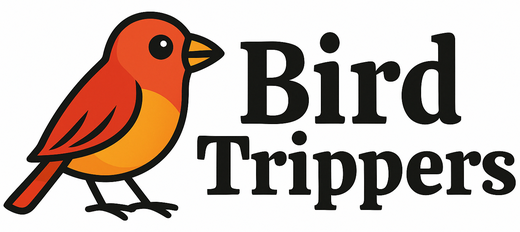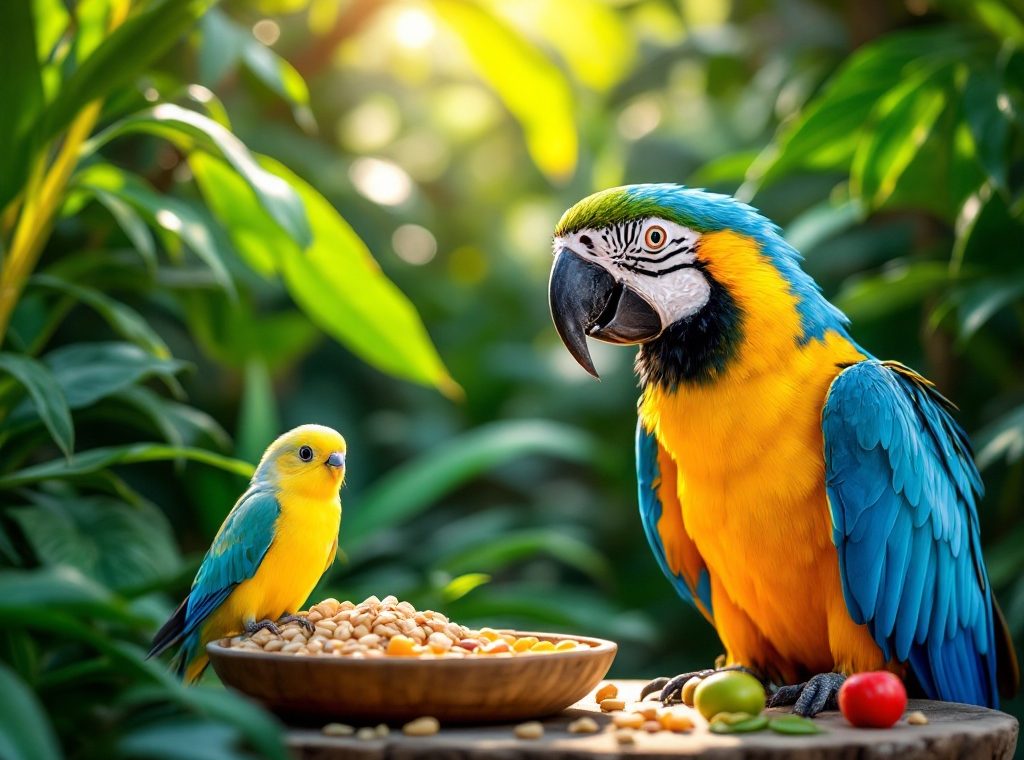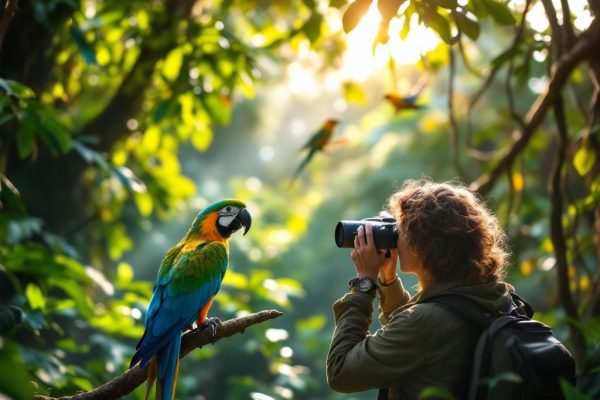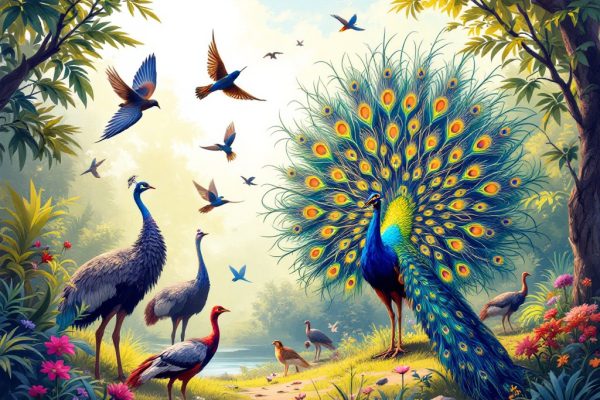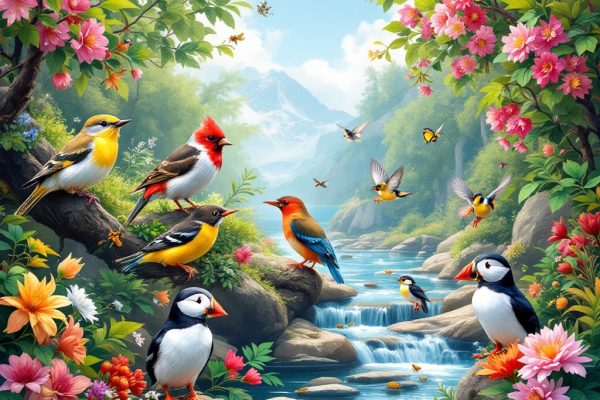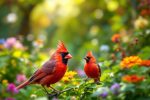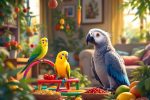How Long Do Parrots Live
Want a feathered friend for life? Discover the amazing lifespan of parrots, from petite budgies living 5-10 years to majestic macaws potentially reaching 80! This comprehensive guide explores the factors influencing a parrot’s longevity, including genetics, diet, and environment. Learn how proper care, nutrition, and regular vet checkups can significantly extend your parrot’s life. Unearth the secrets to a long, healthy, and fulfilling life for your companion parrot. Start your journey now!
Important information
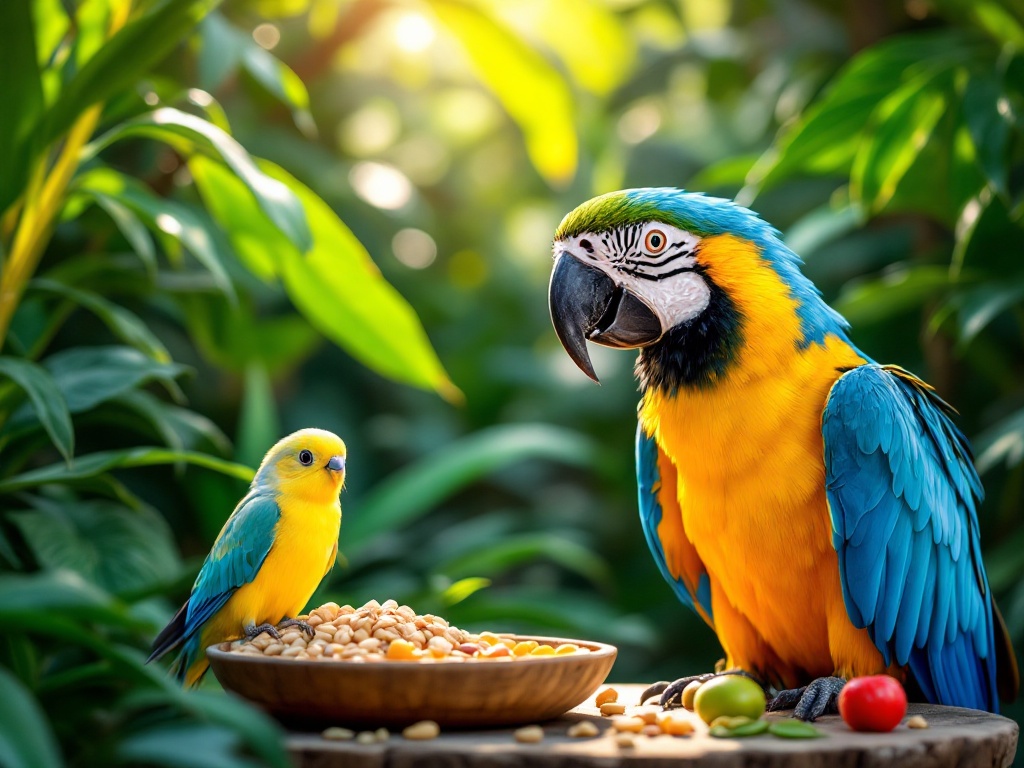
- Parrot lifespan varies significantly by species. Smaller parrots like budgies live 5-10 years, while larger ones like macaws can live 50-80 years or more.
- Diet, environment, genetics, and access to healthcare are key factors influencing a parrot’s lifespan.
- A nutritious diet with fresh fruits, vegetables, and high-quality pellets is crucial for parrot health and longevity.
- Regular veterinary checkups are vital for early disease detection and preventative care, contributing to a longer lifespan.
- A stimulating environment with a spacious cage, toys, and social interaction promotes parrot well-being and longevity.
Understanding Parrot Lifespan
A parrot’s lifespan varies greatly depending on the species and the quality of care it receives. Smaller parrots, like budgies, may live only 5–10 years, while larger species, such as macaws, can live for 50–80 years. Some species have a lifespan of 15–20 years. Factors influencing a parrot’s longevity include genetics, diet, environment, and access to healthcare. A nutritious diet and regular veterinary checkups are essential for a long, healthy life. A stimulating environment with plenty of social interaction contributes significantly to their overall well-being and lifespan.
What is the Average Lifespan of Parrots?
Small parrots typically live 5–15 years, while larger species, such as African Greys and Amazons, can enjoy lifespans of 25 to 75 years. Several key elements influence their longevity:
- genetics,
- diet,
- living conditions,
- access to proper healthcare.
A balanced diet is essential, as are regular veterinary checkups. Furthermore, a stimulating environment contributes significantly to a longer, healthier, and more fulfilling life for these intelligent birds.
Lifespan Variation Among Parrot Species
Larger parrots like African Greys (50-80 years), Cockatoos (20-60 years), and Macaws (30-50 years, and occasionally even longer) have significantly longer lifespans. Smaller parrots, such as budgies, typically live only 5 to 10 years. This lifespan difference is a key factor to consider when choosing a parrot companion.
Factors Affecting Parrot Longevity
A parrot’s lifespan varies greatly depending on its species. For instance, Amazon parrots live for 25 to 50 years, while African greys can live for 50 to 80 years. Macaws, known for their vibrant feathers, typically live for 30 to 50 years, although some live past 80. Cockatoos generally live for 20 to 60 years, with variations between species. Therefore, species is a major factor in a parrot’s lifespan.
Factors Affecting Lifespan
Apart from species, environment plays a critical role. A balanced diet rich in fruits, vegetables, and high-quality pellets promotes a longer lifespan. A spacious, clean, and stimulating environment supports both physical and mental health.
- Provide a balanced diet rich in fruits, vegetables, and quality pellets.
- Ensure a spacious, clean, and stimulating environment.
- Schedule regular veterinary checkups for early disease detection and preventative care.
Genetics and Captivity
Genetics also influence a parrot’s lifespan. Inherited conditions can affect various organ systems, impacting overall health and longevity. Interestingly, parrots often live longer in captivity due to several factors.
- Absence of predators.
- Consistent access to food and water.
- Regular veterinary care.
These combined benefits minimize risks and contribute to increased lifespan.
Species-Specific Lifespan Differences
Small parrots typically live 8 to 15 years, while larger parrots can live 20 to 80 years. Some, such as the Hyacinth Macaw, may even live past a century with proper care.
Impact of Environmental Factors on Life Expectancy
Pet parrots often outlive their wild counterparts due to several factors. In the wild, predators like eagles and snakes are a constant threat. Disease also poses a significant danger. Captive parrots, however, thrive in safer environments, minimizing these risks. This leads to longer lifespans and fewer health issues. This difference is largely due to the controlled environment they enjoy. For example, factors such as a consistent diet, regular veterinary care, and protection from the elements greatly contribute to their well-being and longevity.
The Role of Genetic Mutations in Parrot Lifespan
A parrot’s lifespan is influenced by its genetic makeup. Some gene mutations increase disease susceptibility, potentially shortening its life, while others offer protection, contributing to longevity. Therefore, genetic health is crucial. Environmental factors and the quality of care also significantly impact a parrot’s lifespan.
Why Do Parrots Live Longer in Captivity?
Pet parrots often enjoy longer lifespans than their wild counterparts due to several key factors. Predators are a constant threat in the wild, but captive birds live safely in protected environments. Pet parrots also have access to regular, nutritious meals, which contributes to their overall health. Ready access to veterinary care allows for prompt treatment of illnesses and injuries, further improving their longevity. Finally, a controlled environment minimizes their exposure to diseases and parasites, which are common threats to wild parrots and can significantly impact their lifespan.
Comparing Lifespans of Different Parrot Species
Smaller parrots, like budgerigars and lovebirds, typically live for 5 to 15 years. Larger parrots, such as macaws and cockatoos, boast significantly longer lifespans, often reaching 30 to 50 years. Remarkably, some larger species, like the Hyacinth Macaw, can even live 60 to 80 years in optimal conditions.
Small Parrots: Lifespan and Characteristics
Small parrots, such as budgies and cockatiels, typically live for 5–15 years, making them a good choice for those seeking shorter pet commitments. Other small parrot species, including lovebirds and parrotlets, are playful and relatively low-maintenance. However, these intelligent birds require dedicated attention, including a proper diet and regular interaction. Prospective owners should research the specific needs of these charming companions before bringing one home.
Large Parrots: Lifespan and Longevity
Large parrots are known for their impressive lifespans. Several species can live for decades, with some even reaching a century in age. For instance, African Greys, Cockatoos, and Macaws often live to be 25 years old, and in some cases, even older. Astonishingly, the Hyacinth Macaw can live past 100 years.
Notable Long-Lived Parrots
African Grey parrots live 40 to 60 years, while Amazon parrots can live even longer, from 25 to 75 years. Other parrot species also boast impressive lifespans. Hyacinth Macaws often reach 60 years of age. Cockatoos can live up to 70 years. Scarlet Macaws typically live 40 to 50 years. These remarkable lifespans make parrots exceptional companions.
Improving Your Parrot’s Lifespan
A parrot’s longevity thrives on proper nutrition, particularly a balanced diet of fresh fruits, vegetables, and high-quality pellets. Regular veterinary checkups are essential for early disease detection and preventative care. A healthy environment with a spacious cage, stimulating toys, and ample social interaction contributes significantly to a parrot’s well-being. Here’s a breakdown of essential factors:
- Nutrition: Prioritize a balanced diet of fresh fruits, vegetables, and high-quality pellets.
- Veterinary Care: Schedule regular checkups for early disease detection and preventative care.
- Environment: Provide a spacious cage, stimulating toys, and ample social interaction.
Importance of Proper Nutrition
A healthy diet is essential for your parrot’s well-being and longevity. Proper nutrition fuels their energy, strengthens their immune system to fight off disease, and keeps their feathers vibrant. It also ensures their organs function optimally, contributing to a longer, healthier life. A well-balanced parrot diet should include:
- High-quality parrot pellets: these should comprise 60-70% of their daily intake, providing essential nutrients.
- Fresh fruits and vegetables: offer a variety of colorful options like leafy greens, berries, and carrots.
- Healthy seeds: offer a small portion of seeds as treats, focusing on options like flax, chia, and pumpkin seeds.
- Nuts: provide healthy fats and protein in moderation, avoiding salted or seasoned varieties.
- Clean, fresh water: ensure a constant supply of fresh, clean water is available at all times.
Incorporating Regular Veterinary Checkups
Regular veterinary checkups are crucial for your parrot’s well-being and longevity. These visits enable early detection of potential health issues, leading to more effective treatment and a longer lifespan for your feathered friend. Some common problems diagnosed during these checkups include obesity, feather plucking, breathing difficulties, and nutritional deficiencies. Early intervention minimizes the impact of these concerns, ensuring a healthier life for your parrot.
Creating a Healthy Environment for Companion Birds
Create a nurturing environment. A suitable environment is crucial for your pet bird’s well-being and lifespan.
Schedule regular vet checkups. Regular veterinary visits are essential for preventing and addressing potential health problems.
Provide a balanced diet. A balanced diet consisting of fresh fruits, vegetables, and high-quality pellets contributes significantly to their overall health.
Ensure mental stimulation. Mental stimulation through toys and social interaction enhances their quality of life.
Maintain a clean cage. A clean and spacious cage minimizes the risk of illness and injury.
